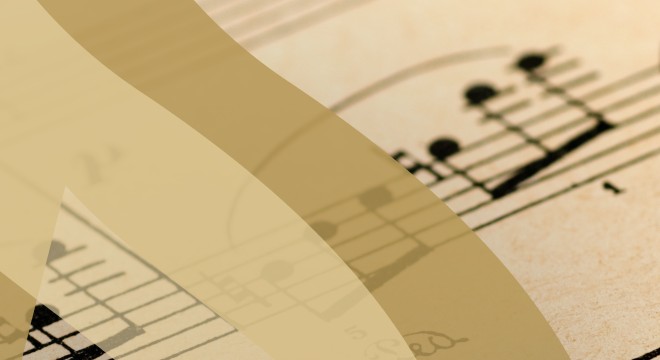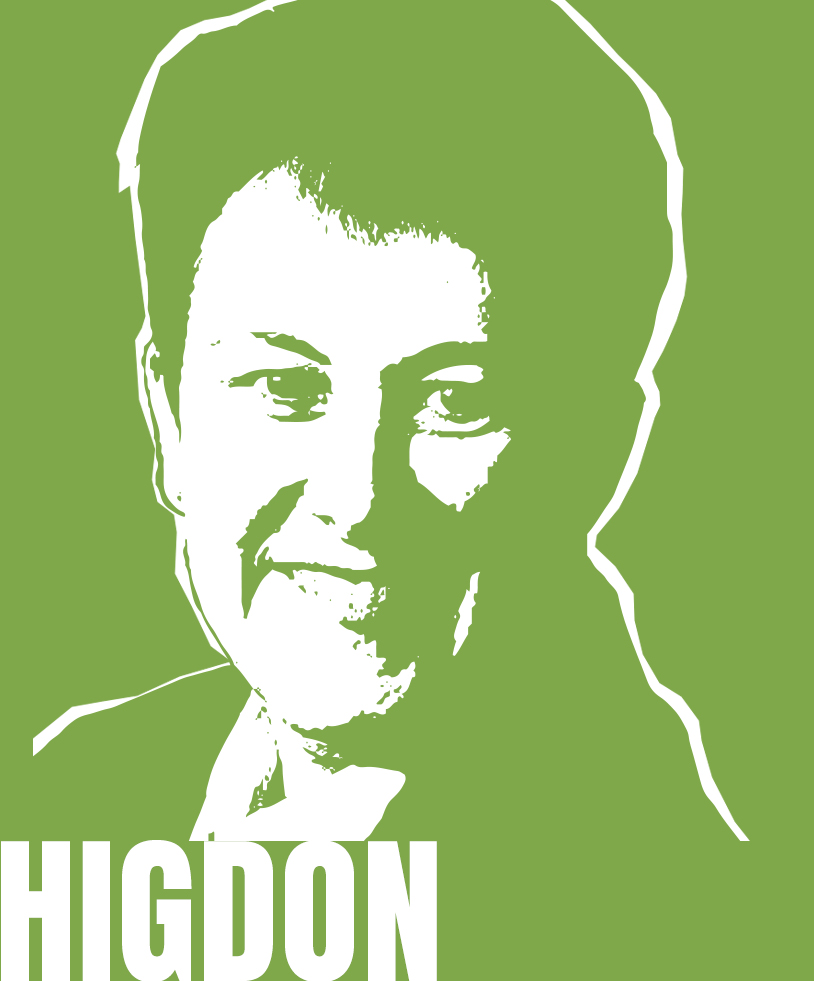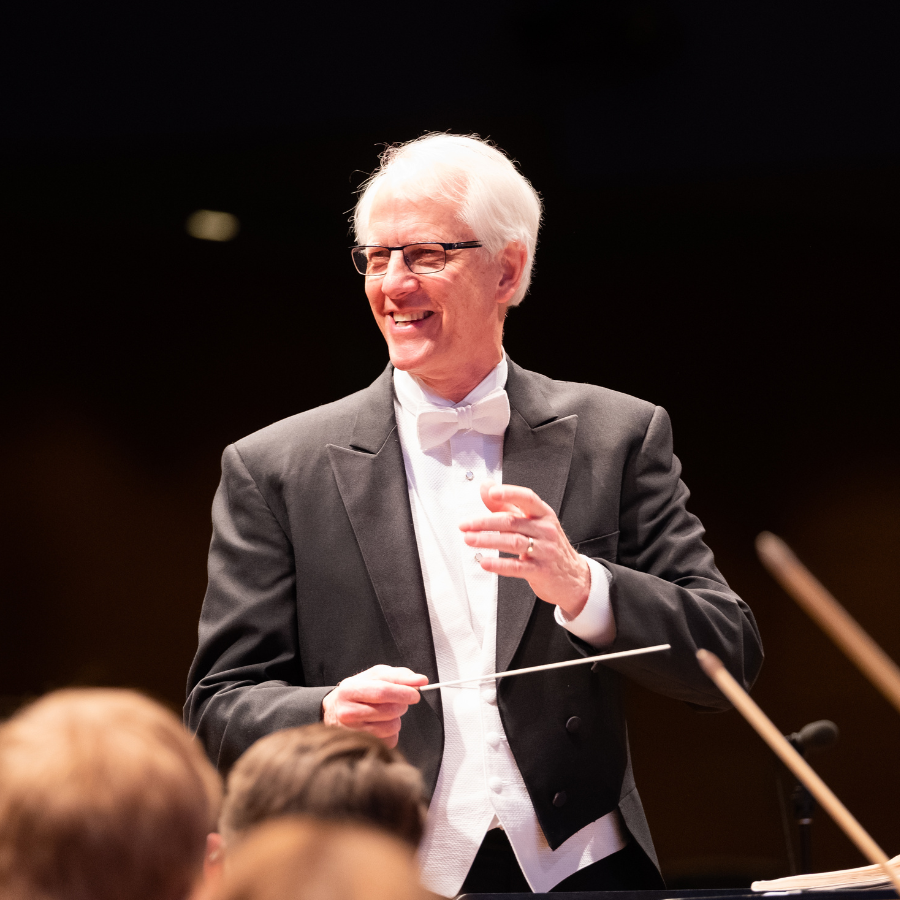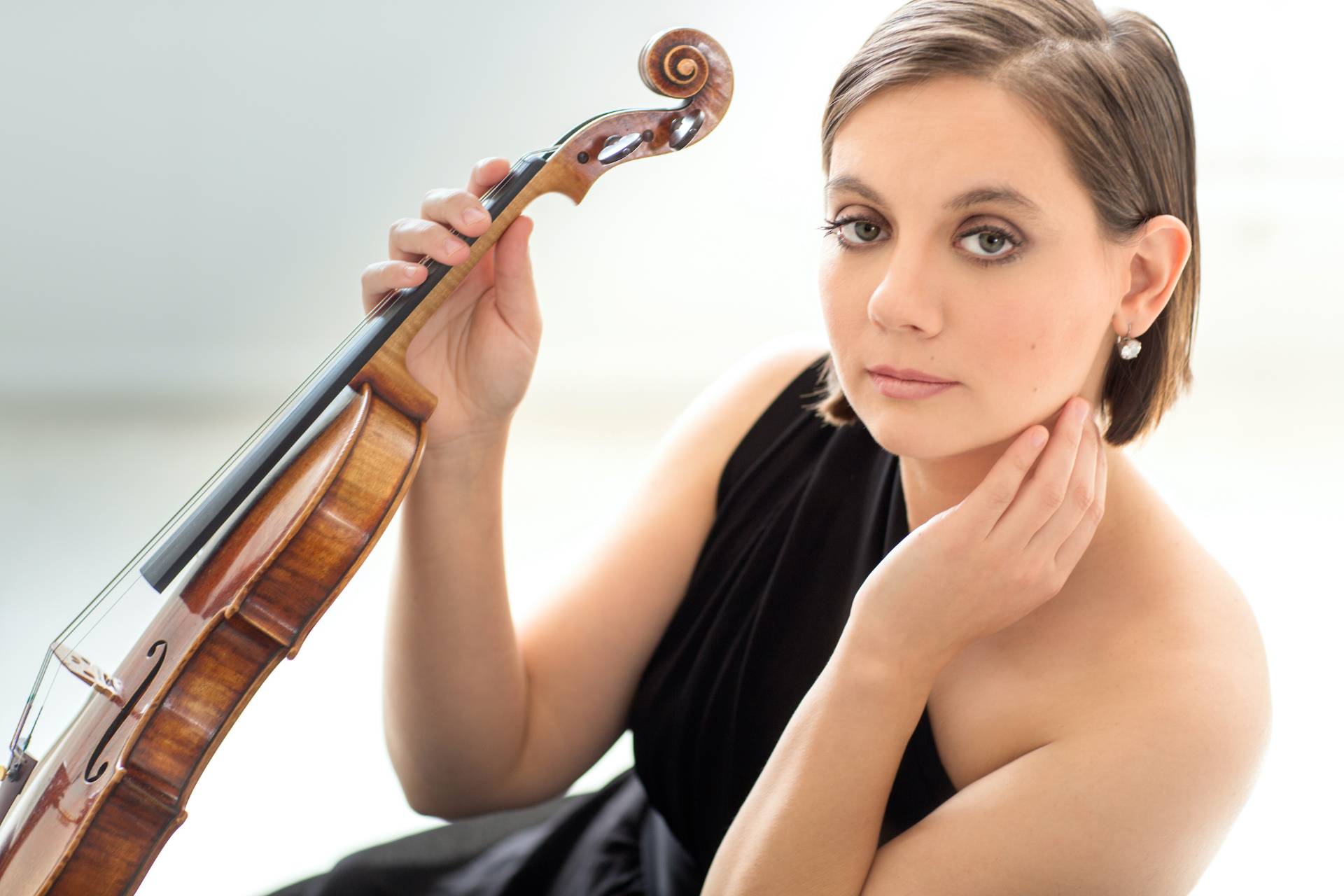Danzón No. 2
In choosing a program entitled "The Americas," I thought it would be nice to feature some composers both from our country and from Latin America. In the first half of the program, we feature two fantastic "dance" composers—one from Mexico and one from Argentina. We begin with Arturo Márquez.
There are some pieces of music that are destined to find a permanent place in the standard repertory. Danzón No. 2 is one of those pieces. Mexican composer Arturo Márquez created a memorable dance that wins you over with its delightful tunefulness and infectious rhythms. There has been a crescendo of performances of Danzón No. 2 over the past 20 years, much to the delight of audiences throughout the world.
Arturo Márquez was born in the Sonora region of Mexico in 1950. In his youth, he was inspired by his father who was a fine musician and active violinist. The family moved to Los Angeles, California when Márquez was 12. He took up the violin, among other instruments, and developed a passion for writing music. He was an avid listener and once stated “my adolescence was spent listening to Javier Solis, sounds of mariachi, the Beatles, Doors, Carlos Santana and Chopin.” In his late teens, the family returned to Mexico and Márquez enrolled in the local Music Conservatory. He later studied composition in Paris and received a Fulbright to study in the U.S. where he enrolled in the California Institute of the Arts to pursue his MFA.
Márquez became infatuated with the sounds of the danzón in local dance halls in Mexico. This unique dance style is a fusion of music from Cuba and the Veracruz region of Mexico. It's a couples' dance, usually starting seductively slow and growing into a wild, exuberant display. Márquez made a brilliant decision to usher the danzón into to the concert hall by creating a series of eight danzóns for symphony orchestra. His second is by far the most popular and most widely performed.
Here is what Márquez wrote for the first performance of his Danzón No. 2:
“The idea of writing the Danzón 2 originated in 1993 during a trip to Malinalco with the painter Andrés Fonseca and the dancer Irene Martínez, both of whom have a special passion for the danzón, which they were able to transmit to me from the beginning, and also during later trips to Veracruz and visits to the Colonia Salon in Mexico City. From these experiences onward, I started to learn the danzón’s rhythms, its form, its melodic outline, and to listen to the old recordings by Acerina Mariano Merceron and his Danzonera Orchestra. I was fascinated and I started to understand that the apparent lightness of the danzón is only like a visiting card for a type of music full of sensuality and qualitative seriousness, a genre which old Mexican people continue to dance with a touch of nostalgia and a jubilant escape towards their own emotional world; we can fortunately still see this in the embrace between music and dance that occurs in the State of Veracruz and in the dance parlors of Mexico City.
“Danzón No. 2 … endeavors to get as close as possible to the dance, to its nostalgic melodies, to its wild rhythms, and although it violates its intimacy, its form and its harmonic language, it is a very personal way of paying my respects and expressing my emotions towards truly popular music.”
Márquez's Danzón has become so popular in Mexico that it is often referred to as their second National Anthem!
-- Steven Amundson
The Four Seasons of Buenos Aires
arr. by Leonid Desyatnikov
with Francesca Anderegg, violin
One of the world's most popular dance styles, the tango, originated in Buenos Aires in the 18th century. This dance genre served as a uniting force, bringing together European immigrants, indigenous Argentines, and former slaves. The tango was a powerful force in developing Argentine culture and continues to be an important part of life in that country today. The tango has also become popular in many countries throughout the world.
Astor Piazzolla was introduced to the sounds and sights of the tango as a young boy growing up in a resort town south of Buenos Aires. When Astor was three years old, Piazzolla's family left Argentina to reside in New York City. In addition to his hours listening to traditional tangos at home, he enjoyed soaking up the variety of new music in the city, seeds that would blossom in his unique tango style. Astor's father introduced him to the bandoneon—the Argentine version of the accordion that has long been associated with the nostalgic qualities of the tango. By the time he was ten, Astor's musical talent was discovered by the world-renowned Argentine tango performer and composer, Carlos Gardel, who encouraged the boy to return to Buenos Aires to join a popular tango orchestra led by another giant in the tango world, Anibal Troilo.
In addition to his life as a tango musician, Astor studied composition with Alberto Ginastera and later went to Paris to study with Nadia Boulanger. After moving back to Argentina, Piazzolla started his own tango "band" comprised of a bandoneon, violin, piano, double bass, and guitar. His hundreds of compositions combined the traditional sounds of the tango with jazz and classical styles in a wonderfully eclectic style often called the nuevo tango.
The Four Seasons of Buenos Aires was composed for his original tango ensemble as four separate pieces. The first piece, Summer, was composed in 1965. Autumn came next in 1969 and Winter and Spring followed in 1970. Although these pieces weren't originally conceived as a four-movement suite, Piazzolla later sanctioned the idea that they could be performed together as a single work. The Four Seasons have been arranged for various other instrumental groups and the Rochester Symphony will present one the most popular versions arranged by Lenoid Desyatnikov for violin solo and string orchestra.
Of course, when pondering a work entitled The Four Seasons, it would be impossible not to think of the wildly popular work of the same name by 18th c. composer Antonio Vivaldi. Vivaldi and Piazzolla took different approaches in musically exploring the seasons. Vivaldi depicts nature's seasonal sounds (birds, leaves, thunder, wind, etc.), whereas Piazzolla endeavored to express one's feelings and moods in Buenos Aires during each season. Desyatnikov, the arranger, pays homage to Vivaldi by quoting some well-known passages from his Seasons, and they'll be hard to miss! It's fun to note that, since Argentina and Italy are in different hemispheres, Piazzolla cleverly takes excerpts from Vivaldi's Winter and quotes them in his Summer movement!
In addition to hearing plenty of references to the tango, you'll hear Piazzolla employ modern classical trends, such as using an abundance of dissonant harmonies and injecting modern Bartok string techniques. This music is full of passion derived from the tango style, and Piazzolla goes in many directions using a huge variety of effects, tempos, dynamics and musical dispositions. I hope you'll agree it all adds up to a very satisfying and fun listening experience!
-- Steven Amundson
Suite from Cold Mountain
Minnesota premiere: New Music for Americas consortium commission
Jennifer Higdon's opera Cold Mountain is based on Charles Frazier's award-winning novel of the same name. It garnered sold out performances across the US, received two Grammy nominations and won the International Opera Award for best new opera. In cooperation with the League of American Orchestras, a consortium of 35 orchestras, including the Rochester Symphony, commissioned Higdon to compose a suite using musical themes from the opera to highlight "the emotional throes of love, war and the journey of a soldier making his way back to Cold Mountain." The Cold Mountain Suite received its first performance with the Delaware Symphony on September 23, 2022 and our performance will be giving the Minnesota premiere.
The composer writes:
"While creating this suite, it was a wonderful challenge to determine which music to feature in order to create a dynamic and engaging orchestral work. Because Cold Mountain is about love, war and death (imagine that in an opera!), there was a lot of dramatic music from which to pick. I chose various arias, duets and quintets, with the idea that they would be arranged not in story order, but in a manner to create the greatest contrast for the listener.
"The beginning and end of the suite come from the opening of Act 2 and the closing of Act 1—purely for its style of ramping up. It then quickly moves into Storm Music, followed by the quintet, I Should Be Crying; the duet Orion (which I calculated would need two weeks to write, but in an amazing fit of inspiration, came to me in one day—the very thing creative types dream about!); the fiddling duet Bless You Ruby; Ada's contemplative aria, I Feel Sorry For You; then music from the scene where Inman and Ada finally get together after four years of his being away at war; and finally to the music that ends Act 1 to close out the suite.
"After taking 28 months to write this opera, and having lived with the characters so deeply in my heart and soul, it is truly a privilege to share this music with you. Thank you for joining us on this journey through Cold Mountain." -- Jennifer Higdon
Pulitzer Prize and three-time Grammy-winner Jennifer Higdon (b. Brooklyn, NY, December 31, 1962) taught herself to play flute at the age of 15 and began formal musical studies at 18, with an even later start in composition at the age of 21. Despite these obstacles, Jennifer has become a major figure in contemporary Classical music. Her works represent a wide range of genres, from orchestral to chamber, to wind ensemble, as well as vocal, choral and opera. Her music has been hailed by Fanfare Magazine as having "the distinction of being at once complex, sophisticated but readily accessible emotionally," with the Times of London citing it as "…traditionally rooted, yet imbued with integrity and freshness." The League of American Orchestras reports that she is one of America's most frequently performed composers.
Higdon's list of commissioners is extensive and includes The Philadelphia Orchestra, The Chicago Symphony, The Atlanta Symphony, The Cleveland Orchestra, The Minnesota Orchestra, The Pittsburgh Symphony, the St. Paul Chamber Orchestra, as well such groups as the Tokyo String Quartet, the Lark Quartet, Eighth Blackbird, and the President's Own Marine Band. She has also written works for such artists as baritone Thomas Hampson, pianists Yuja Wang and Gary Graffman, violinists Nadja Salerno-Sonnenberg, Jennifer Koh and Hilary Hahn. Her first opera, Cold Mountain, won the prestigious International Opera Award for Best World Premiere in 2016; the first American opera to do so in the award's history. Performances of Cold Mountain sold out its premiere run in Santa Fe, North Carolina, and Philadelphia (becoming the third highest selling opera in Opera Philadelphia's history).
Higdon received the 2010 Pulitzer Prize in Music for her Violin Concerto, with the committee citing the work as "a deeply engaging piece that combines flowing lyricism with dazzling virtuosity." She has also received awards from the Guggenheim Foundation, the American Academy of Arts & Letters, the Koussevitzky Foundation, the Pew Fellowship in the Arts, The Independence Foundation, the NEA, and ASCAP. As winner of the Van Cliburn Piano Competition's American Composers Invitational, Higdon's Secret & Glass Gardens was performed by the semi-finalists during the competition.
Higdon has been a featured composer at many festivals including Aspen, Tanglewood, Vail, Norfolk, Grand Teton, and Cabrillo. She has served as Composer-in-Residence with several orchestras, including the Pittsburgh Symphony Orchestra, the Philadelphia Orchestra, and the Fort Worth Symphony. She was honored to serve as the Creative Director of the Boundless Series for the Cincinnati Symphony's 2012-13 season. During the 2016-17 and 2017-18 academic years Higdon served as the prestigious Barr Laureate Scholar at the University of Missouri Kansas City.
In 2018, Higdon received the Eddie Medora King Award from the University of Texas, Austin. That same year, she received the prestigious Nemmers Prize from Northwestern University which is awarded to contemporary classical composers of exceptional achievement who have significantly influenced the field of composition.
Higdon enjoys more than 200 performances a year of her works. Her orchestral work, Blue Cathedral, is one of the most performed contemporary orchestral works in the repertoire with more than 600 performances since its premiere in 2000.
Her works have been recorded on over 70 CDs. Higdon has won three Grammys in her career for Best Contemporary Classical Composition: first for her Percussion Concerto in 2010, in 2018 for her Viola Concerto and in 2020 for her Harp Concerto.
Dr. Higdon received a Bachelor's Degree in Music from Bowling Green State University, an Artist Diploma from The Curtis Institute of Music, and an M.A. and PhD from the University of Pennsylvania. She has been awarded honorary doctorates from the Hartt School and Bowling Green State University.
Dr. Higdon's music is published exclusively by Lawdon Press. For more information, visit jenniferhigdon.com.
-- Steven Amundson
Gratia Viva
A few years ago, I was approached by a friend and fellow Northfield resident, Doug Scott, about writing an orchestral work for his wife, Grace Schroeder Scott, in honor of her 36 years of service to St. Olaf College as a Senior Development Officer and in gratitude for her commitment and service in philanthropy. After spending some time talking with Doug and Grace about the direction this piece might take, we agreed that the theme would in some way embrace the notion of living in gratitude as a means of enriching one's life experience, something that resonated deeply with each of us. I chose the Latin title Gratia Viva—loosely translated Living in Gratitude.
All creative artists need a clear starting point; a musical seed that will grow and blossom. The seed I chose for Gratia Viva was the dedicatee's name, Grace. Four of the letters are musical pitches: G, A, C and E. Striving to use all five, I chose the solfege syllable "re" for R. In solfege, Re = D and with that addition I happened upon a nice little melodic idea: G-D-A-C-E.
I latched onto this sequence of pitches and made Grace's musical name ever-present in Gratia Viva. In addition to the Grace motif, we talked about employing a reference to one of Grace's favorite hymns, “Nun Danket Alle Gott” (Now Thank We All Our God). I used the first phrase of that hymn, initially hinting at it rather subtly in the opening section, and later quoting that phrase it in its entirety.
Gratia Viva is divided into four sections. It begins with a sense of timelessness, evoking feelings of mystery and wonder. Introduced by solo oboe against the backdrop of yearning chords in the upper strings, the GRACE motive is introduced by solo oboe. Soon after, the piccolo hints at the hymn tune (Now, Thank We All Our God). Evoking a sense of love and gratitude, various iterations of this tune are echoed throughout the piece, and these are often combined with the GRACE motif.
The second section is vibrant and celebratory. The GRACE theme is prominent throughout this section and a brass fanfare serves as a transition into the third section, which uses abundant statements of both the GRACE and hymn themes, evoking playfulness and discovery. There is an increase in energy and the orchestra is at its fullest and most vibrant before slowing into the final section, which symbolizes deep gratitude. Here, the cello section introduces a variant of the GRACE theme. This theme is passed throughout the orchestra and the orchestra gradually builds to a climactic conclusion. Here I try to emulate something very special in Grace's experience: the glorious feeling of reaching a mountain top after a long journey—that moment of relief and satisfaction when one can finally stop to enjoy a spectacular view.
Grace Schroeder Scott served as a senior member of the development staff at St. Olaf College from 1983–2019 and she continues to build donor relationships, assist charitable organizations, and serve as a senior development consultant in the field of philanthropy. “Live to Give” is her lifelong mission. Gratia Viva was premiered by the St. Olaf Orchestra in Minneapolis on January 19, 2022.
-- Steven Amundson
West Side Story Overture
adapted for symphony orchestra by Maurice Peress
Leonard Bernstein was one of the most influential and gifted musicians of the 20th century. The legacy he left as conductor, educator, pianist, and composer is legendary, and West Side Story, inspired by Shakespeare's Romeo and Juliet, is undoubtedly the most famous musical venture of his life. The 1957 Broadway production was nominated for 6 Tony Awards, including Best Musical. Bernstein's brilliant musical score has been a singular success and captured the hearts of audiences around the globe.
Bernstein did not create the traditional overture so often used as a curtain raiser. Instead, he begins with a pseudo-ballet that introduces several important musical ideas, depicting the growing tensions between the Sharks and the Jets. Maurice Peress, who served as assistant conductor of the New York Philharmonic under Bernstein, created this overture to accompany the opening credits of the 1961 film version of the musical. There are four distinct sections in the overture starting with the ensemble music before the Rumble in Act one. Next comes Tonight, There's a Place for Us, and finally the exuberant dance, Mambo. Enjoy!
-- Steven Amundson










